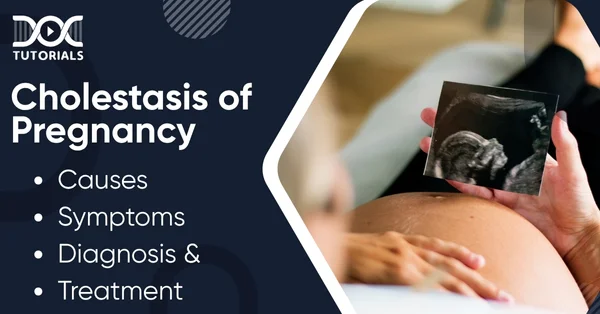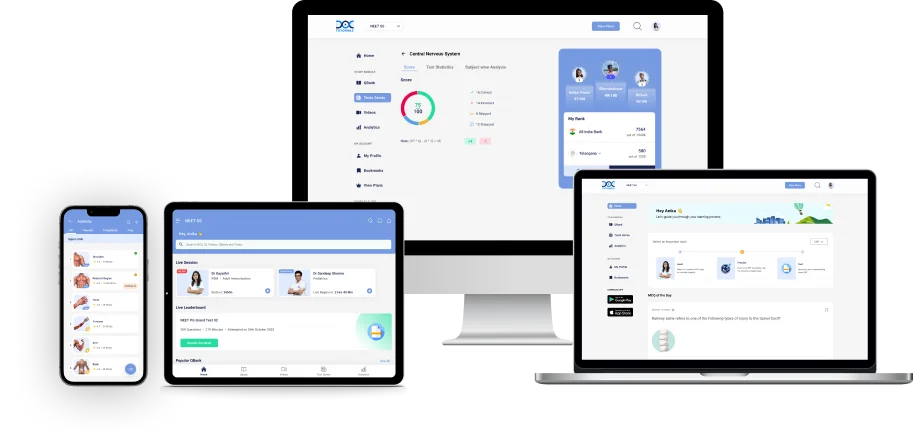Cholestasis of Pregnancy: Causes, Symptoms, Diagnosis, and Treatment

The prevalence of intrahepatic cholestasis of pregnancy (ICP), a cholestatic liver illness specific to pregnancy, varies globally and ranges from roughly 0.3 to 5.6% of pregnancies. Its frequency varies significantly by nation and ethnic group, with Chile and Bolivia having higher rates. According to studies, incidence rates in India range from 0.082% to 1.2%.
Hence, it is important to know the causes, risk factors, diagnosis, and treatment of cholestasis of pregnancy to effectively manage its symptoms. If you are pursuing NEET PG, you should be familiar with cholestasis of pregnancy, as it will enhance your knowledge base and better prepare you for the examination.
Read on to know more!
What is Cholestasis of Pregnancy?
Intrahepatic cholestasis of pregnancy is a liver disease that usually happens in the second or third trimester of pregnancy. It is marked by bile not flowing properly in the liver, which causes bile acids to build up in the blood. This condition happens in less than 1% of all pregnancies, but it is more common in women who are having twins or other multiples.
What are the Causes and Risk Factors of Cholestasis of Pregnancy?
We don’t know exactly what causes cholestasis during pregnancy; however, there are a few things that can make it happen:
Changes In Hormones
Higher amounts of prenatal hormones, especially progesterone and oestrogen, might make it harder for the liver to move bile. Hormones may slow down the flow of bile, which can cause it to accumulate in the liver and then enter the bloodstream, leading to symptoms such as severe itching.
Genetic Predisposition
Genetics play a significant role in ICP. Women with the illness have been found to have changes in some genes, namely ABCB4. These genes help produce and transport bile acids, and changes to them can prevent bile from flowing normally.
Environmental Factors
Even though we don’t fully understand them, environmental factors may play a role in ICP. The disorder occurs more frequently in certain locations and at specific times of the year, suggesting that external factors may influence its development.
Underlying Liver Conditions
People who already have liver disorders are more likely to get ICP. Chronic liver disease or viral hepatitis can make it harder for the body to make bile, which can make the impact of hormonal and genetic variables during pregnancy worse.
What are the Signs of Cholestasis During Pregnancy?
ICP can make the mother very uncomfortable and put the foetus at risk. The following are signs of cholestasis:
- Intense itching (pruritus) is a common sign of pregnancy, especially at night when the palms of the hands and soles of the feet itch. This irritation is interesting because it happens without a rash.
- Yellow skin and the whites of the eyes are signs of jaundice, indicating that bile levels are elevated.
- Nausea: Some women experience nausea.
- Loss of Appetite: Not wanting to eat as much can be a sign of an underlying issue.
- Stools that smell bad and are oily: You could notice that the consistency and smell of your stools change.
- Dark Urine: Your urine may look darker than usual.
- Light-Colored Stools: The person’s stools may turn pale or clay-colored.
How Can You Know If You Have Cholestasis Of Pregnancy?
A combination of clinical examination and specialised laboratory tests is used to identify cholestasis of pregnancy. These are the main steps in making a diagnosis:
- Checking for symptoms: The primary symptom is severe itching (pruritus), particularly on the palms and soles, with no accompanying rash. This itching becomes worse at night a lot.
- Medical History and Physical Exam: Your doctor will ask about your symptoms and medical history and then do a physical exam to make sure that itching isn’t caused by something else.
- Serum Pregnancy Bile Acid Test: A blood test checks how much bile acid is in your blood. High amounts of bile acids (≥10 µmol/L) prove that you have ICP.
- Liver Function Tests (LFTs): These tests check how well your liver is performing by looking at the levels of bilirubin and liver enzymes. Unusual results can help confirm the diagnosis.
- Extra Tests: Occasionally, your doctor may recommend a prothrombin time test to assess the clotting ability of your blood or an ultrasound to examine your liver and bile ducts.
How to Treat Cholestasis of Pregnancy?
You can treat obstetric cholestasis in the following ways:
- Medication: Doctors often provide Ursodeoxycholic Acid (UDCA) or Ursodiol (Actigall, Urso) to lower the amount of bile acid in the blood. This helps alleviate itching and improves liver function.
- Symptom relief: Antihistamines may help alleviate itching, a common symptom. Soaking your hands and feet in cool or lukewarm water can provide relief for a short time.
- Lifestyle adjustments: Wearing soft, loose clothes can help keep your skin from getting irritated. Getting enough rest is vital for your health throughout pregnancy.
- Monitoring: Bile acid levels and liver function tests help determine the severity of the problem. You may also have non-stress tests and biophysical profiles performed to monitor the baby’s health.
- Consider early delivery: If bile acid levels stay high or symptoms don’t go away, it may be best to deliver the baby early, around 37–38 weeks, to lower the chance of problems.
FAQs about Cholestasis Of Pregnancy
- Can cholestasis of pregnancy hurt the baby?
Yes, it can cause major problems for the infant, like being born too early, having trouble breathing because of inhaling meconium-stained amniotic fluid, and even dying. Because of these concerns, doctors and nurses often suggest delivering the baby early, at 37 weeks.
- Is it typical to have cholestasis during pregnancy?
Cholestasis during pregnancy is not a natural component of pregnancy. It’s a liver problem that happens in the last few weeks of pregnancy and causes severe itching without a rash. It can be incredibly unpleasant, but the main worry is what problems it could cause for the baby.
- Is there a treatment for cholestasis of pregnancy?
Yes, the goal of treatment is to alleviate the itching and prevent further problems from occurring. Doctors may give you ursodiol to lower your bile acid levels and suggest an early delivery to lower the hazards to the baby. Checking on the baby’s health on a regular basis is also part of the treatment plan.
- Is cholestasis during pregnancy harmful?
Yes, it can be risky, especially because it can put the baby at risk for things like stillbirth and premature birth. To mitigate these dangers, it is crucial to maintain a vigilant approach and handle them effectively.
- How long does it take to treat cholestasis during pregnancy?
The problem usually goes away when the baby is born. However, therapy, which may include medication and perhaps early delivery, begins during pregnancy to control symptoms and lower risks. The actual length of time depends on the person and when they give birth.
Conclusion
Cholestasis of pregnancy is a serious condition that could impact the health of the mother and the baby. Hence, it is crucial to understand the causes, symptoms, diagnosis, and treatment options for this condition to deal with it effectively.
Learning about cholestasis of pregnancy in detail is important for aspiring medical students studying for the NEET PG exam. DocTutorials offers the ideal solution with professional video courses, quick revision programs, and interactive tools to ensure you are well-prepared to excel in the NEET PG exam with high scores. Check out our best courses for the NEET PG exam!
Latest Blogs
-

NEET SS Exam 2024: Analysis, Key Dates, Counselling
The NEET SS 2024 exam kicked off on March 29, 2025. Over two days and two slots, candidates across 13…
-

NEET PG Registration 2025: An Essential Guide For Exam Prep
The NEET PG registration, which is conducted online, is a crucial step in the exam process. Filling out the NEET…
-

NEET PG Syllabus 2025: A Must-Have Complete Guide for Exam Success
The NEET PG Syllabus acts as one of the foundation stones for aspiring postgraduate medical students like you who are…




